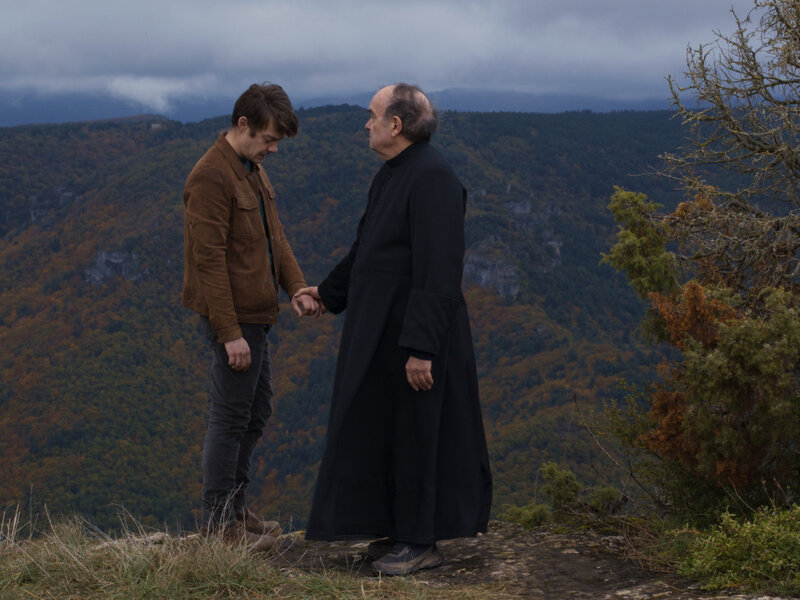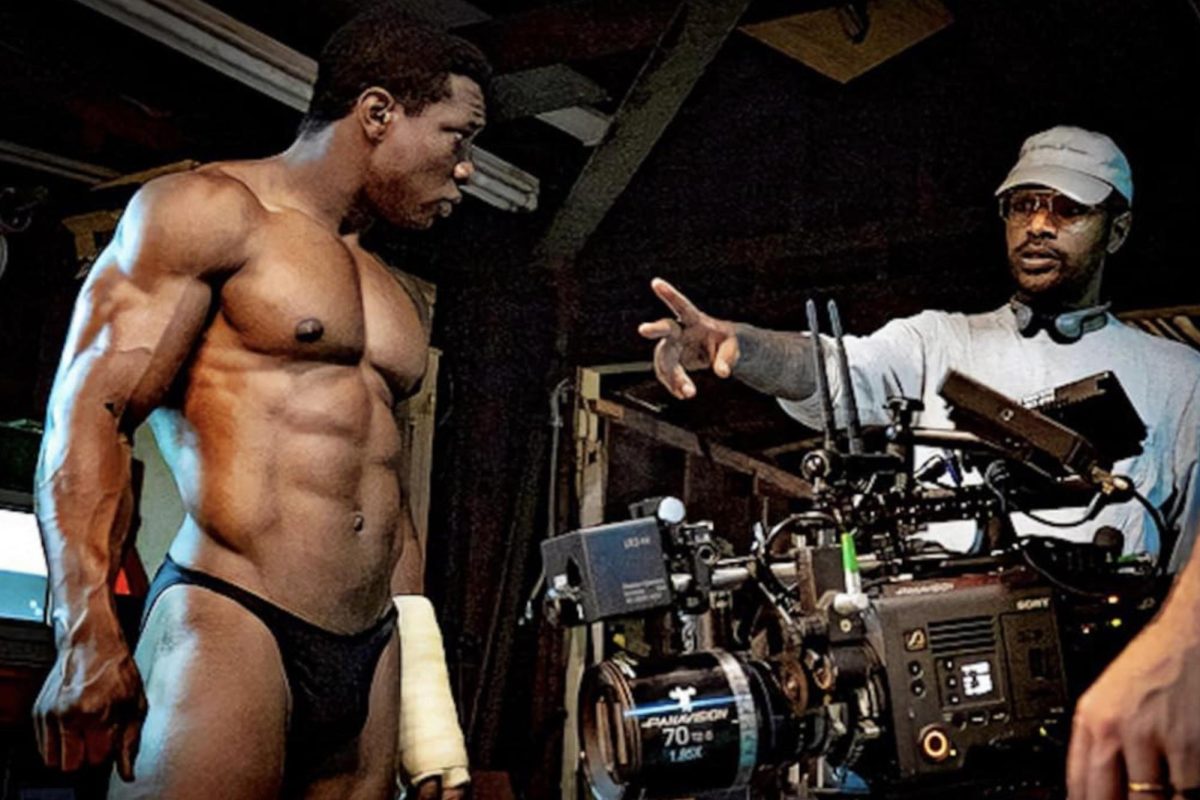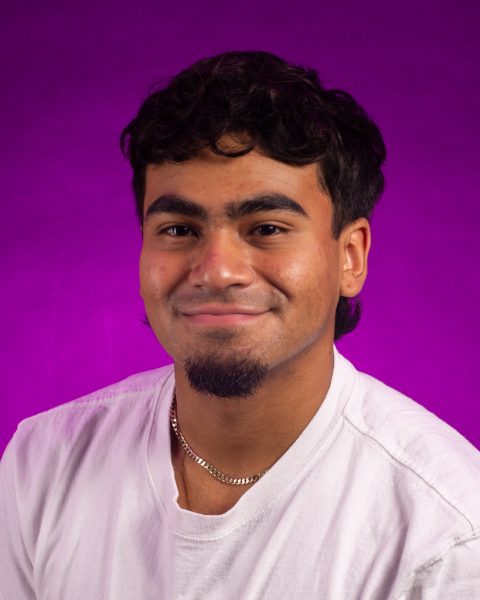One by one, students sat before their class and presented their art projects. A series of dystopian and distorted images and audio that sounded out of this world, showcased only a fraction of their thinking.
Casondra Sobieralski’s ART201: Intro to Digital Media is open to art majors and minors and is available as a general education art elective to all students. In a recent assignment titled: Is AI Art in the History of Conceptual Art, Sobieralski asked her class whether or not artificial intelligence is a form of art or a tool that can help make art. The assignment was to create a minimum of ten images generated by text-to-image generator, with students creating their prompt for the AI to interpret. From there, they had to make a graphic novel or movie with said images. For their assignment, students were free to use a wide range of text-to-image AI generators that included DreamAI, Midjourney, OneRayML, AdobeFirefly and RunwayML.
Sobieralski has been teaching at SFSU since 2022. She started her art career as a sculptor in the late ’80s and early ’90s, attending the University of Pittsburgh and graduating with a bachelor’s degree in art and art history. She said the assignment’s purpose was to familiarize her students with AI because she thinks it’s a helpful tool young artists should take advantage of.
“It was to make them aware of current events and current discourse around AI,” said Sobieralski. “Can we think of ways to use AI that have content, meaning, emotion and art? We want to get them in there and get them in the game.”
Sobieralski elaborated that getting students familiarized with this tool comes with AI potentially changing the professional landscape for artists. She brought up the ‘Hollywood Writers Strike’ that took place earlier this year, seeing over 11,000 writers go on strike for over 148 days to demand higher salaries and fairer contracts because of how AI is changing the Hollywood landscape.
The advancements in AI leave artists and content creators in an uncomfortable position, Sobieralski said that AI will replace some of the work artists do.
“I think illustrators and UX[user experience] designers are in trouble, or at least the way that they work is going to change,” said Sobieralski. “The computer is going to do a lot of the manual skills, but the computer can’t necessarily do the higher level thinking skills. The computer is not a human. It’s not going to be able to replicate that.”
Student Lloyd Brase, who’s enrolled in the course, has been majoring in arts for five years and wants to be a videographer or cinematographer when he graduates. For his project, he went above and beyond the set requirements and produced a four-minute long movie with audio and visuals generated by AI from a poem prompt he submitted. Brase believes that AI could threaten the professional landscape for artists.
“There’s going to be a lot of people out of work because of this,” said Brase. “It’s like they found an easier way so you[artists] can pack your bags and go home. The companies don’t care. They just see money so if you’re the problem they can easily erase you because they have this option now, with a supercomputer to generate a script and art.”
“It was one of the harder ones of the semester,” said Sol Arellano Calderon, an art major enrolled in the class, in reference to the assignment’s complexity.” This one took the most time, more so putting it all together. The first week was mainly doing research and then trying to get the AI-generated images.”
After students presented, they were asked to give their stance on whether or not AI art is art or a tool. Both professors and students mostly agreed that AI is a tool that can benefit artists. However, students agreed that as of right now, AI has an equal amount of positives as it does negatives.
“It can be a really positive thing and can help you get the things you need to compose and edit your format for media,” said Brase. “It can also be a really bad thing because people have the intention to steal people’s money and screw a lot of artists over. There’s not really pros and cons to it. It depends on the person utilizing it to reach their goal.”“As of right now, there’s a lot of negatives. I’ve associated it with greed,” said Calderon. “If whoever is out there working on the AI generators, they can maybe think more about the artists themselves instead of profiting off it, maybe we can go in a good direction.”
Professors and students disagreed that AI art can be constituted as art. Students think that art belongs to artists, while professors believe that the prompt in and of itself is art.
Deborah Stein has just that belief. She is a professor of Arts of Asia 205, Introduction of Arts of South Asia and a GWAR writing class, and has been teaching at SFSU for six years. Stein brought up the notion of ‘deskilling’ to AI art, which attracts attention away from art and focuses it toward conceptual art.
“AI is not generating prompts. There has to be something generating it,” said Stein. “If you can talk, you can write, AI can’t talk, you talk to it and then it makes something based on what you give it. The quality of what it makes is the quality of the prompt you give it.”
As a dyslexic professor and author, Stein said AI saves her time. She emphasized that the process of making art and writing is amplified and accelerated by AI, so if those tools are available, they shouldn’t be rejected. Stein encourages her students to use AI with her guidance. She wants them to be honest with it and use it as a tool to draw ideas. She doesn’t think that AI takes away from anything the artist tries to do.
Professor Sobieralski and Stein both drew comparisons to past AI and technological advancements and how those changed professions.
“I started out in sculpture in the late 80s and early 90s, and we had a 3D design teacher who said ‘We are going to the computer lab and play with 3D programs,” said Sobieralsk. “The sculpture students went ballistic, and cut to thirty years later, who would imagine saying a computer isn’t an art tool. So why can’t AI be an art tool? Anything can be an art tool.”
Sobieralsk also compared AI with photography and how that became a profession of its own while taking the job of historical artists and opening a whole new avenue of jobs.
“I think AI is going to have a tremendous impact,” said Stein. “I think it can be as revolutionary as the laptop, spellcheck or email. As a dyslexic person, without a laptop or spell check, not only would I not be a professor but I wouldn’t have completed college. I don’t think that the laptop or spell check is cheating from things I’m supposed to do as a professor or artist.”
Sobieralski’s main objection is that AI could potentially have biases. She said that women and people of color’s viewpoint has often been missing on public forums, and this knowledge base could possibly have missing perspectives. AI essentially scrapes what it can find from the web and reflects what people are training it to do.
“If we don’t have a wide variety of voices using the AI and training the AI, it won’t represent all of us,” said Sobieralski.”










